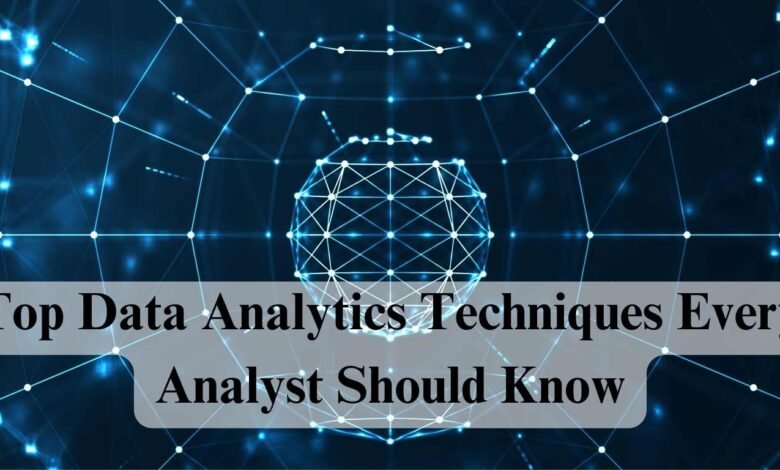
Introduction to Data Analytics Techniques
Data analytics techniques are like tools in a toolbox, helping analysts make sense of the vast amount of data available to them. These techniques are essential for extracting valuable insights, identifying patterns, and making informed decisions based on data. Whether you’re analyzing sales data for a retail company or patient records for a hospital, understanding these techniques is crucial for success in the field of data analytics.
Data analytics techniques can be broadly categorized into several types, each serving a specific purpose in the data analysis process. These include descriptive analytics, diagnostic analytics, predictive analytics, prescriptive analytics, text analytics, machine learning, and big data analytics. Each technique offers unique capabilities and insights, allowing analysts to uncover hidden trends, understand past events, predict future outcomes, and even prescribe actions to optimize results.
Descriptive Analytics: Understanding the Past
Descriptive analytics is like looking in the rearview mirror—it helps analysts understand what has happened in the past. This technique involves summarizing historical data to provide insights into trends, patterns, and relationships. One of the key tools used in descriptive analytics is data visualization, which allows analysts to represent data visually through charts, graphs, and dashboards. By visualizing data, analysts can quickly identify patterns and trends that may not be apparent from raw data alone.
Another important aspect of descriptive analytics is exploratory data analysis (EDA), which involves examining data to uncover patterns, anomalies, and relationships. EDA techniques include summary statistics, such as mean, median, and standard deviation, as well as data mining techniques like clustering and association rule mining. These techniques help analysts gain a deeper understanding of the data and identify areas for further investigation.
Overall, descriptive analytics provides a foundational understanding of the data, serving as the first step in the data analysis process. By leveraging descriptive analytics techniques, analysts can gain valuable insights into past events, trends, and patterns, laying the groundwork for more advanced analysis techniques like diagnostic and predictive analytics.
Diagnostic Analytics: Explaining Why
Once we understand what has happened in the past through descriptive analytics, the next step is to delve into why those events occurred. This is where diagnostic analytics comes into play. Diagnostic analytics focuses on identifying the root causes of past outcomes or events. It helps analysts understand why certain trends or patterns emerged in the data.
One of the primary tools used in diagnostic analytics is root cause analysis. This technique involves systematically analyzing data to uncover the underlying factors that contributed to a specific outcome. For example, if sales suddenly dropped for a particular product, root cause analysis might reveal that it was due to a change in marketing strategy or an increase in competitor activity.
Another important aspect of diagnostic analytics is hypothesis testing. This technique involves formulating hypotheses about potential causes of an outcome and then testing these hypotheses using statistical methods. For instance, if a company wants to understand why customer satisfaction scores have decreased, they might hypothesize that it’s due to longer wait times for customer service. Hypothesis testing allows analysts to determine whether there is a statistically significant relationship between variables and the outcome of interest.
By using diagnostic analytics techniques, analysts can gain valuable insights into the factors driving past events, enabling them to make more informed decisions about how to address issues or capitalize on opportunities. It helps organizations learn from past mistakes, optimize processes, and improve outcomes in the future.
Predictive Analytics: Forecasting the Future
While descriptive and diagnostic analytics focus on understanding past events, predictive analytics takes things a step further by forecasting future outcomes based on historical data. Predictive analytics uses statistical algorithms and machine learning techniques to identify patterns and trends in data and make predictions about future events.
One of the key tools used in predictive analytics is regression analysis, which involves building a mathematical model to predict the relationship between one or more independent variables and a dependent variable. For example, a retail company might use regression analysis to predict future sales based on factors like advertising spending, promotions, and seasonality.
Time series forecasting is another important technique in predictive analytics, especially when dealing with data that changes over time. This technique involves analyzing historical data points collected at regular intervals to forecast future values. For instance, a transportation company might use time series forecasting to predict demand for rides during different times of the day or week.
By leveraging predictive analytics techniques, organizations can anticipate future trends, identify potential risks and opportunities, and make proactive decisions to achieve their goals. Whether it’s forecasting sales, predicting customer churn, or optimizing inventory levels, predictive analytics empowers organizations to stay ahead of the curve and make data-driven decisions that drive success.
Prescriptive Analytics: Guiding Action
Prescriptive analytics is the next frontier in data analytics, focusing on recommending actions to optimize outcomes based on predictive models and historical data. While predictive analytics tells us what is likely to happen in the future, prescriptive analytics goes a step further by providing insights into what actions should be taken to achieve desired outcomes.
One of the key techniques used in prescriptive analytics is optimization modeling. This involves formulating mathematical models that identify the best course of action to maximize or minimize a certain objective, subject to constraints. For example, a logistics company might use optimization modeling to determine the most efficient routes for delivering packages while minimizing fuel costs and delivery times.
Another important aspect of prescriptive analytics is simulation. This technique involves creating computer models of real-world systems to simulate different scenarios and assess the potential impact of various decisions. For instance, a healthcare provider might use simulation to test different treatment protocols and determine which one is most effective in improving patient outcomes.
By leveraging prescriptive analytics techniques, organizations can move beyond simply predicting future outcomes to actively shaping and influencing those outcomes. Prescriptive analytics empowers decision-makers with actionable insights, enabling them to make informed choices that drive positive results and maximize value from their data.
Conclusion
In the fast-paced world of data analytics, understanding and mastering essential techniques are paramount for analysts to derive meaningful insights and drive informed decision-making. From descriptive analytics providing a snapshot of past events to predictive analytics forecasting future outcomes, each technique plays a crucial role in unraveling the mysteries hidden within data. For individuals aspiring to embark on a journey into the realm of data analytics, pursuing a data analytics course in Noida can provide a solid foundation and practical skills essential for success in the field. Noida, with its vibrant tech community and reputable educational institutions, offers an ideal environment for learning and growth in data analytics. By enrolling in a data analytics course in Noida, Bangalore, Jaipur, Delhi, etc, aspiring analysts can gain hands-on experience with cutting-edge tools and techniques, preparing them to tackle real-world challenges and make a meaningful impact in the ever-evolving landscape of data analytics. In conclusion, mastering essential data analytics techniques is key to unlocking the full potential of data and driving innovation in today’s data-driven world. With the right skills and knowledge, analysts can harness the power of data to solve complex problems, uncover valuable insights, and shape a brighter future for businesses and society alike.



